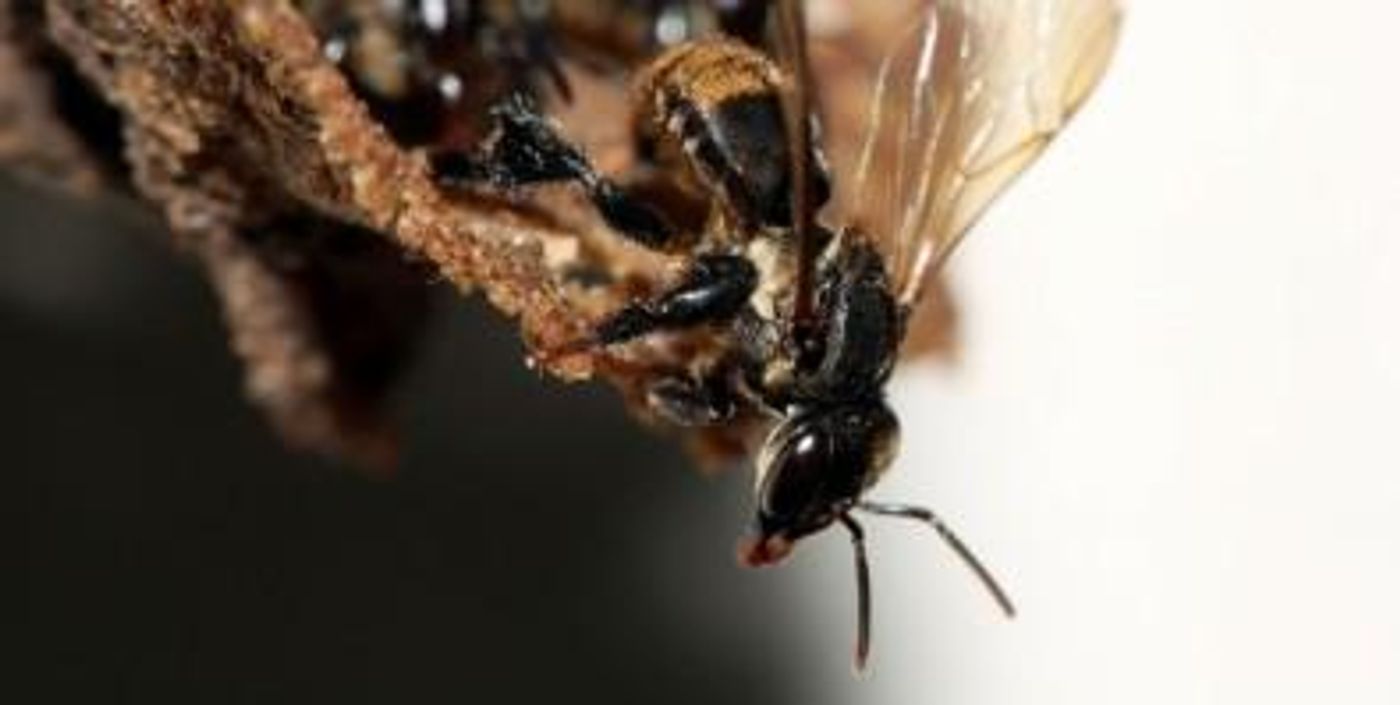Complex Symbiotic Relationship Between Bees and Fungi is Revealed
An international team of researchers has learned more about how a stingless bee relies on several different fungi to survive. Building on previous work, they’ve shown that larvae of Scaptotrigona depilis, a Brazilian stingless bee, live in symbiosis with three types of fungi, Zygosaccharomyces sp, Candida sp., and Monascus ruber, which help the bees develop and become adults. The findings have been reported in PLOS One. These results suggest that pesticides may be detrimental to the growth of bees if they are affecting fungi.
Filaments from the Zygosaccharomyces sp act as food during the initial developmental stages of S. depilis. Molecules produced by the other fungi interact with the filaments, to help control the growth of the bees.
"The new findings demonstrate that the interactions between these social insects and their microbiota are much more complex than we can imagine. This should serve as a warning against the indiscriminate use of pesticides in agriculture since many are lethal to fungi. They may not affect bees directly, but they can be harmful to the microorganisms bees require to survive," explained Mônica Tallarico Pupo, Professor of Medicinal Chemistry and Natural Products at the University of São Paulo's Ribeirao Preto School of Pharmaceutical Sciences (FCFRP-USP) in Brazil.
Previous work by Pupo has focused on the importance of the symbiotic relationship between fungi and S. depilis bees, as shown in the video.
All of the bee colonies that Paludo has studied have revealed the presence of fungi, and scientists have studied interactions between the fungi in the lab.
"We analyzed every possible combination of the fungi," Pupo said. "When we put Candida sp. and M. ruber together, for example, we observed that the latter completely changed shape and became orange in color. Candida, meanwhile, practically disappeared from the coculture, which means M. ruber inhibited its growth."
M. ruber releases an orange pigment, and when that happens in an environment where Candida also grows, a compound called monascin can also be found. If M. ruber is grown in the presence of Zygosaccharomyces sp., another molecule called lovastatin is generated. Monascin has been shown to reduce the production of cholesterol. Lovastatin has similar effects and has been used in drugs that lower cholesterol. It also inhibits the growth of Zygosaccharomyces sp. Candida, on the other hand, can promote the growth of Zygosaccharomyces sp.
"These results are a strong indication that the interaction among the three fungi is important to bee survival. A master's student [Gabriela Toninato de Paula] is currently studying other stingless bee species and has also found a symbiotic relationship with fungi," Pupo added.
Sources: AAAS/Eurekalert! via Fundação de Amparo à Pesquisa do Estado de São Paulo, PLOS One










